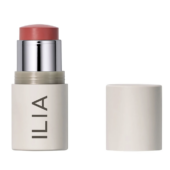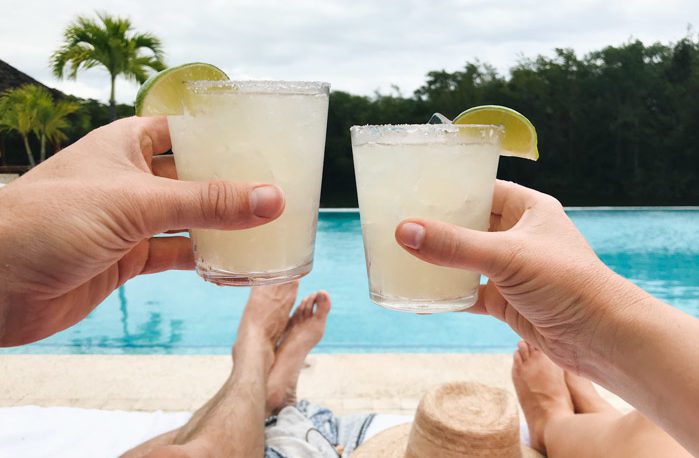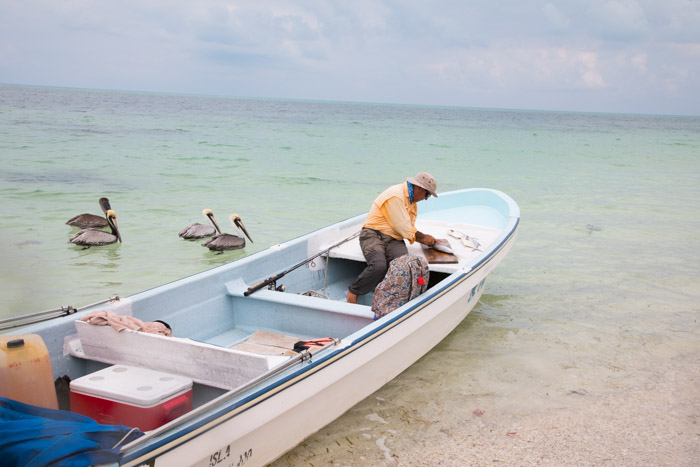In Season: Grilled Salmon with Basil, Watermelon & Tomatoes
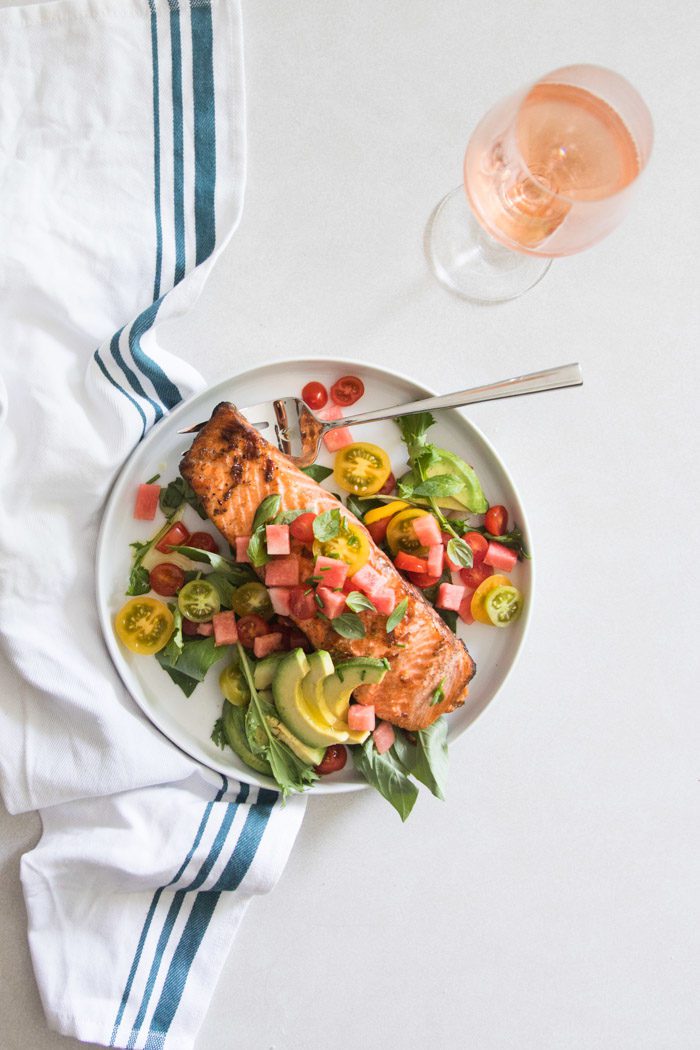
Cooking seafood at home can be intimidating. At least, it has been for me. And yet, whenever I’ve pushed myself to try a new recipe, I’ve been well-rewarded. It’s something I’d like to include more in our meals.
We’re lucky to have an incredible family-owned and operated grocery—Nugget Markets—right around the corner, with knowledgable fishmongers who are happy to help in this regard. We will again be partnering on a series of posts this year so, to start, I asked if I could visit the seafood department to get some advice about how we can all have more confidence when it comes to choosing the best fish and preparing it at home.
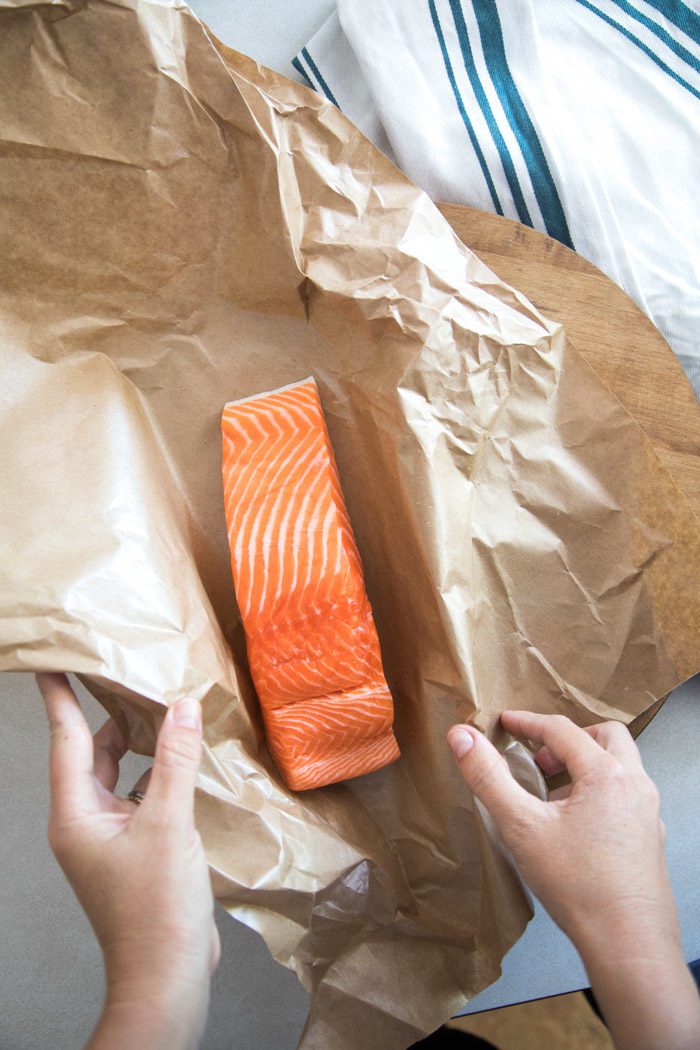
What I’ve learned in the process is that the surest way to get a delicious result is to start with quality, fresh fish. There are three main factors to consider:
First, when it comes to freshness, the place you buy your fish matters! Nugget Markets, I learned, receives fresh seafood deliveries six days a week, and is in constant contact with their supplier so that they only order as much as they can sell that day. Ask your local store about their delivery schedule. Seafood is the most perishable item in the store, and they should be willing to run out of something rather than overstock a display.
Second, shopping day is (ideally) cooking day. If you’re not cooking your seafood the day you purchase it, you can store it in portions in a sealed bag with the air pushed out in your fridge for up to 3 days. Some recommend placing ice on top (being careful not to let the water touch the fish). Freezing should be a last resort.
If you have a specific recipe you’re hoping to follow for dinner, bring it in to the market. If the fish you had in mind is unavailable—perhaps it’s out of season—a good fishmonger can suggest an alternative. They may even be able to give you some cooking tips—or season a fillet for you!
Third, sustainability counts. When you purchase seafood that is sustainably farmed or harvested, you are supporting things like: biodiversity, habitat health (clean oceans and land), and the livelihood of fishing communities.
Your fishmonger should be informed and able to explain the impact of their products. Nugget Markets follows Best Aquaculture Practices and partners with FishWise, a non–profit, science–based, sustainable seafood labeling program that incorporates green, yellow and red color designations indicating whether sources are well-managed and caught or farmed in environmentally responsible ways. The labels also tell the origin of the fish and the catch method. I was interested to learn that wild-caught seafood is not necessarily better than farmed seafood, or vice versa. It depends entirely on case–by–case basis assessments.
I’m happy to say that Nugget tries to carry all green and yellow labels—and little to no red (which means that the seafood is over-fished and/or its farming or catch method is damaging to the environment).
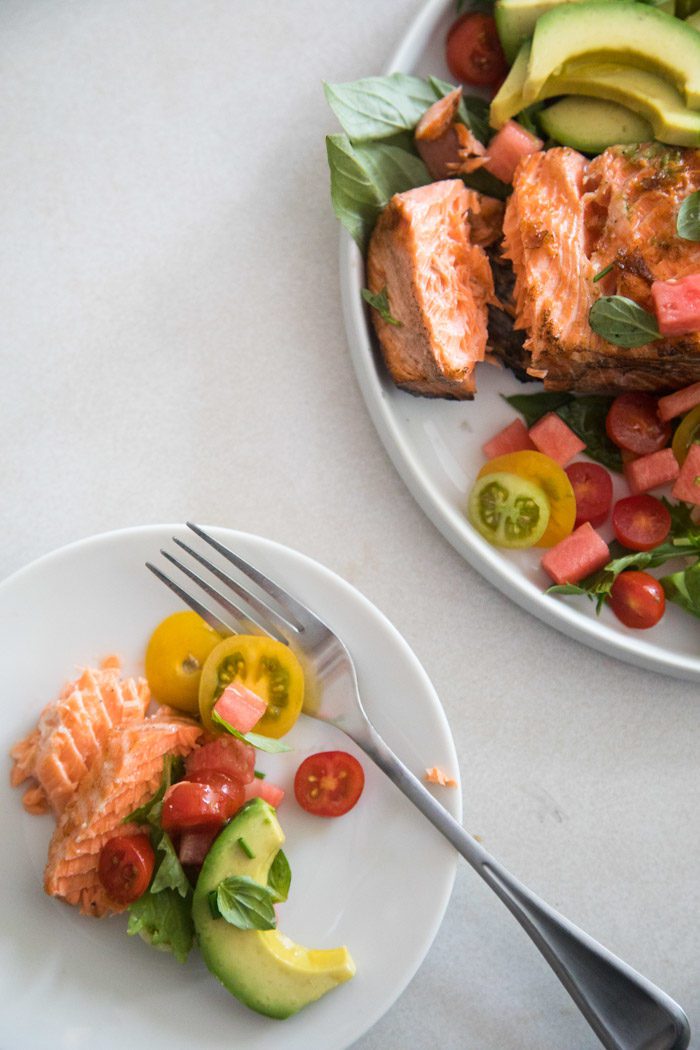
Of course this doesn’t address what’s perhaps the most common home-cook question (and fear): How do I avoid making my house smell like fish?
The simplest answer? Cook it outside! Here’s a recipe for grilled Salmon that’s perfect for making outside this summer…














